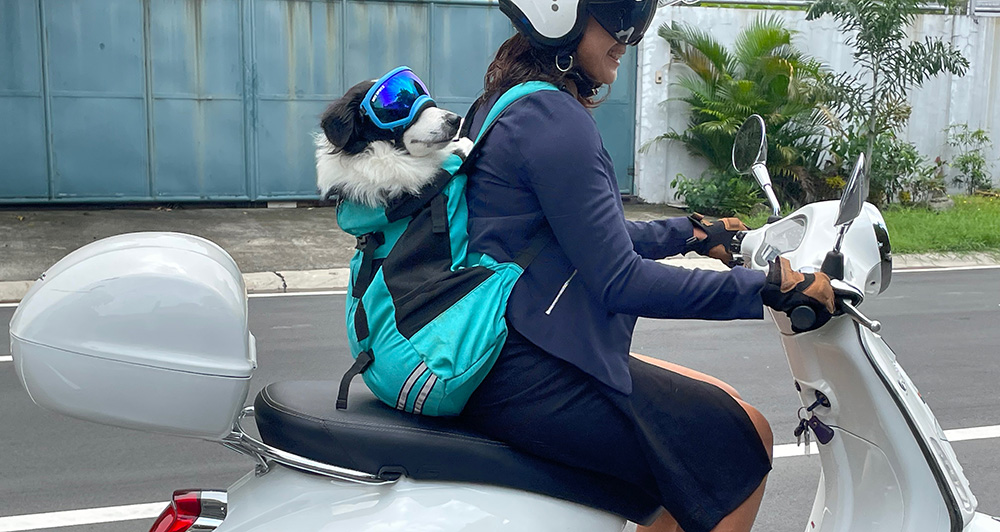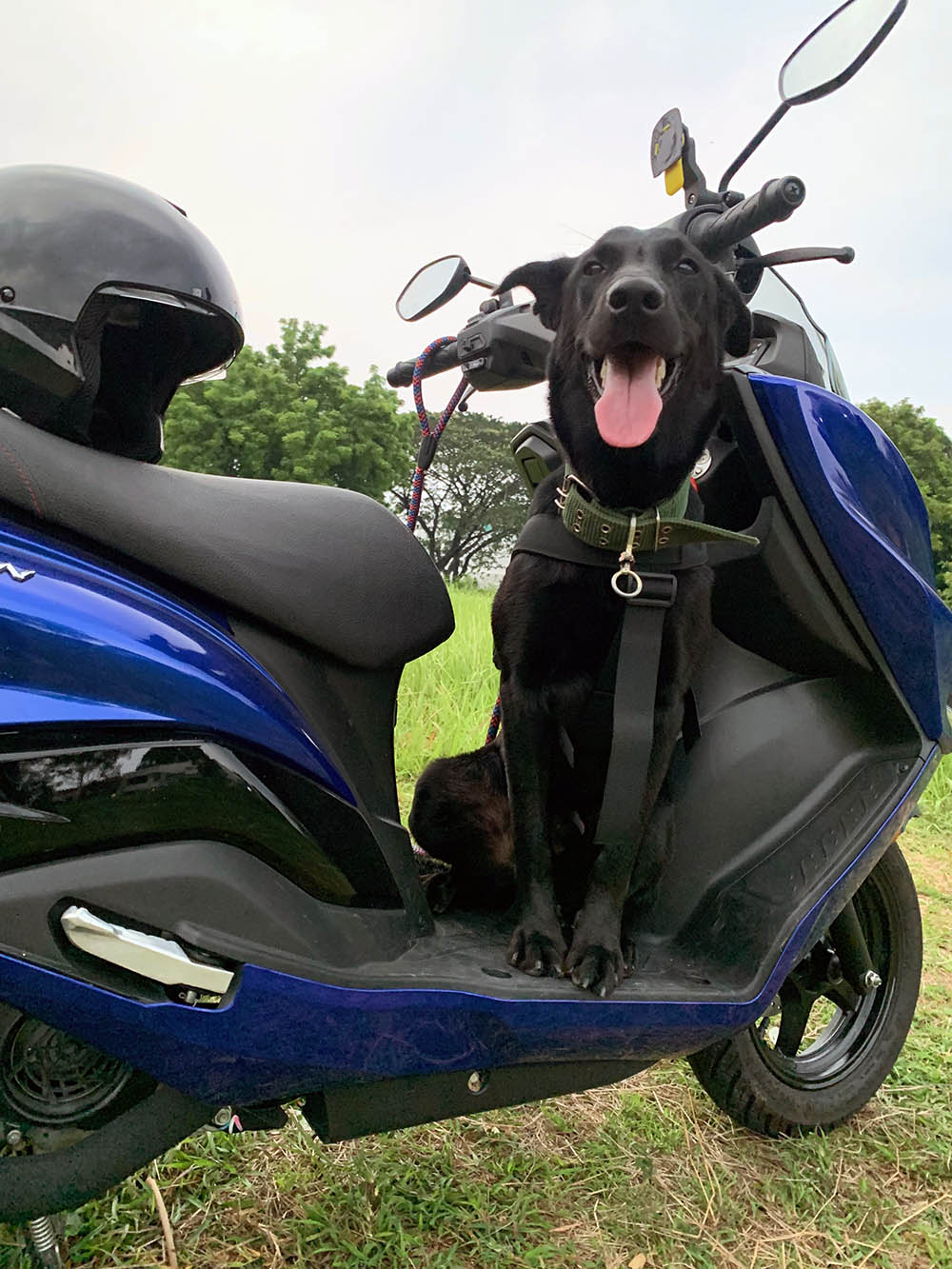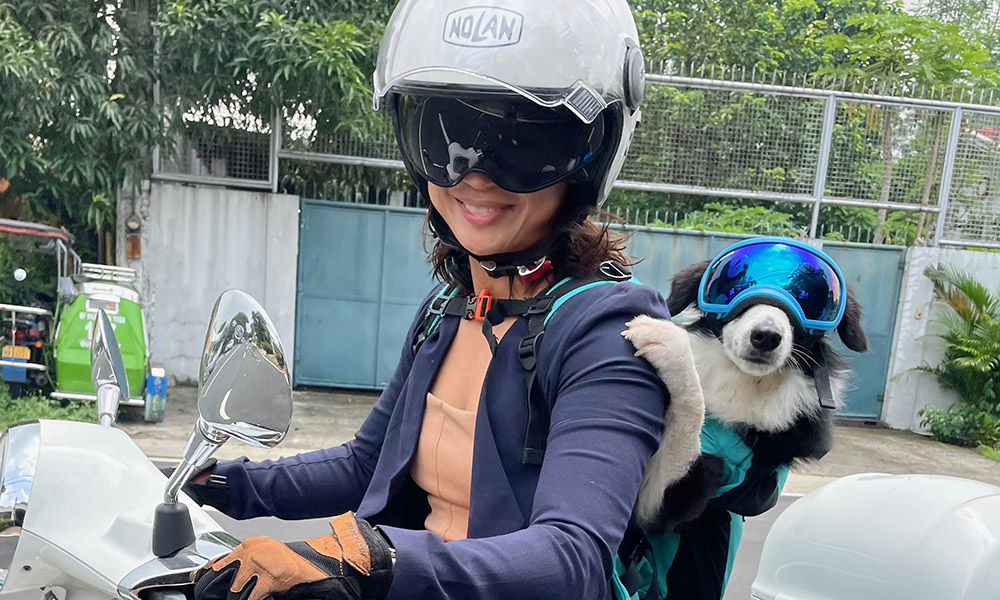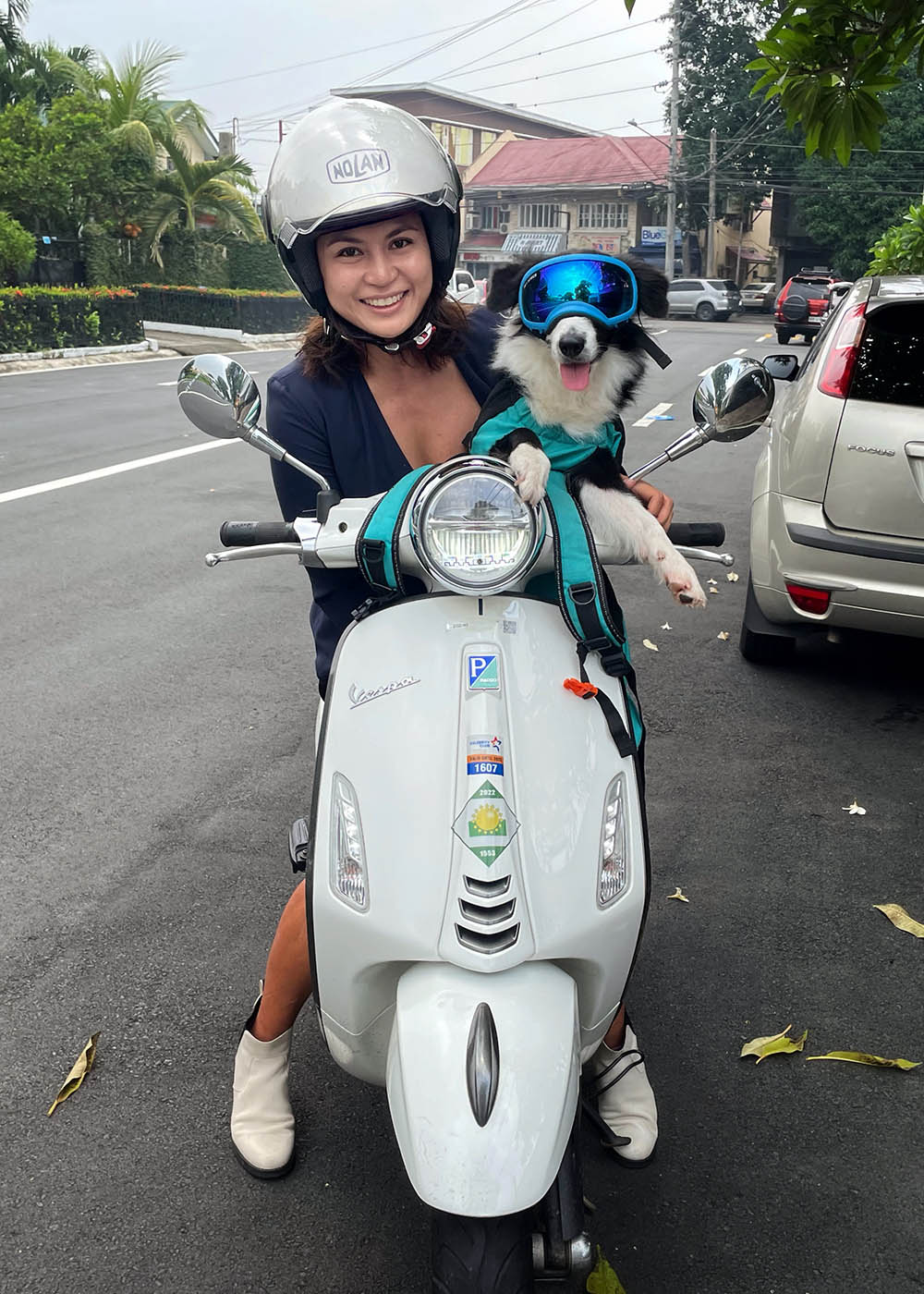
We love dogs at VISOR, so much so that Job the office dog probably eats and sleeps better than some of our hooman crew. Having been a pawrent for many years now, I’ve always loved the company of dogs. In many cases, I actually prefer just being with my canine best friend rather than another human because…dogs just make everything better.
No toxicity, no ego, no judgment, and as long as you feed and take care of them, then it’s perfect. Of course, they don’t live as long as humans, which is why every moment with them is precious.
And that’s why I love taking my dog on scooter rides. Riding is almost always a pleasure, even if it’s for something as mundane as going to the nearby palengke for vegetables or to the village complex for ice cream.
One of the big benefits of our long-term Suzuki Burgman has been the wide and flat floorboard, which is perfect for my Labrashepherd to stand on while we scoot around the village.
My friend Kitch, on the other hand, has gone one better by placing her Border Collie Po in a backpack-style carrier.

If you have a dog (or a scooter), and have been wondering how to get your furbaby to hop on safely, here’s how to do it. But first, some precursors:
- Your dog should know how to obey the basic “sit” and “stay” commands. If it can’t stay still on a bench, then it’s not going to work on a moving bench that is a scooter.
- You’ll need a scooter with a flat stepboard like a Vespa or a Burgman. Without that stepboard, the dog will have no choice but to sit behind you, but that’s a lot sketchier especially if both of you are new to riding together. Scooters with a hump down the middle for the tank, as well as underbones and regular backbone bikes, will also be hard to work with.
Once you’ve got numbers 1 and 2 down, the rest is easy.
Teach your dog to remain calm in the presence of a running motorcycle. If your dog isn’t used to the noise and the vibration of a scooter, start by standing next to the scooter with your dog on a leash, then start the engine. If the dog becomes skittish, you can calm his or her nerves by sitting down and petting it. Dogs take their cues from their humans, and once they see that everything is okay with you, they eventually will calm down.

Next, with the leash firmly looped on your left wrist (not your right because that’s the throttle hand), sit down, then get your dog to follow suit on the stepboard. Put your bike on the center stand so you’re more stable.
Your dog may initially be scared to get on, so gently carry him to the stepboard and hold him there for a few minutes if needed. Talk in a soothing voice, again to reassure him that everything is alright.
Once your dog has settled down, gently apply the throttle and see if it reacts. If it stands up and makes to jump off, brake, restrain the dog, then get him to settle down again. You’ll need to do this several times, moving a few feet every time until he no longer reacts to the movement.
Once you’re moving, restrict your speed to no more than 20km/h for now. Place your legs on the edge of the stepboard so these act as barriers to prevent the dog from jumping off. If the dog suddenly jumps off, BRAKE right away.
Be ready to place both feet on the ground so you don’t fall off. Remember that the leash is looped around your left wrist, so you need to quickly counteract the jerking movement if it jumps or else you’ll lose your balance.
Needless to say, do all of this in a quiet area with little to no traffic. Why not just tie the leash to the scooter itself, you ask? Because having it on your wrist gives you more control over your dog.

Okay, now you’re moving! Pay close attention to traffic ahead of you, beside you, and behind you. Potholes and bumps may upset the bike and startle your dog. Other dogs and cats along the route may also cause a reaction. I give these a big leeway or ride a little faster to get past them quickly.
You’ll know your dog is relaxed if it lies down and actually takes a nap, which means it feels safe already. On the other hand, it may also be having the time of its life peeking from the side and having its tongue lolling in the wind.
Be consistent. Your dog might not “get it” the first time around, which means you need to do this several times before it finally does. Some dogs will also be smarter than others and learn on the first try, while others may need more time. Either way, teach your dog out of love, and eventually it will work out.
Having said that, certain dogs will also just not be suitable for this kind of thing. My Belgian Malinois and Labrashepherd learn fast and are down for anything, but my Border Collie absolutely refuses to get on. Don’t force the issue if the dog looks unhappy.
Keep your speed low and try as much as possible to stay away from busy roads. Don’t become complacent even if your dog has settled down. As long as you remember what to do to prevent your dog from jumping off—and also what to do if it actually does—you and your dog can have many memorable and safe rides together.



0 Comments